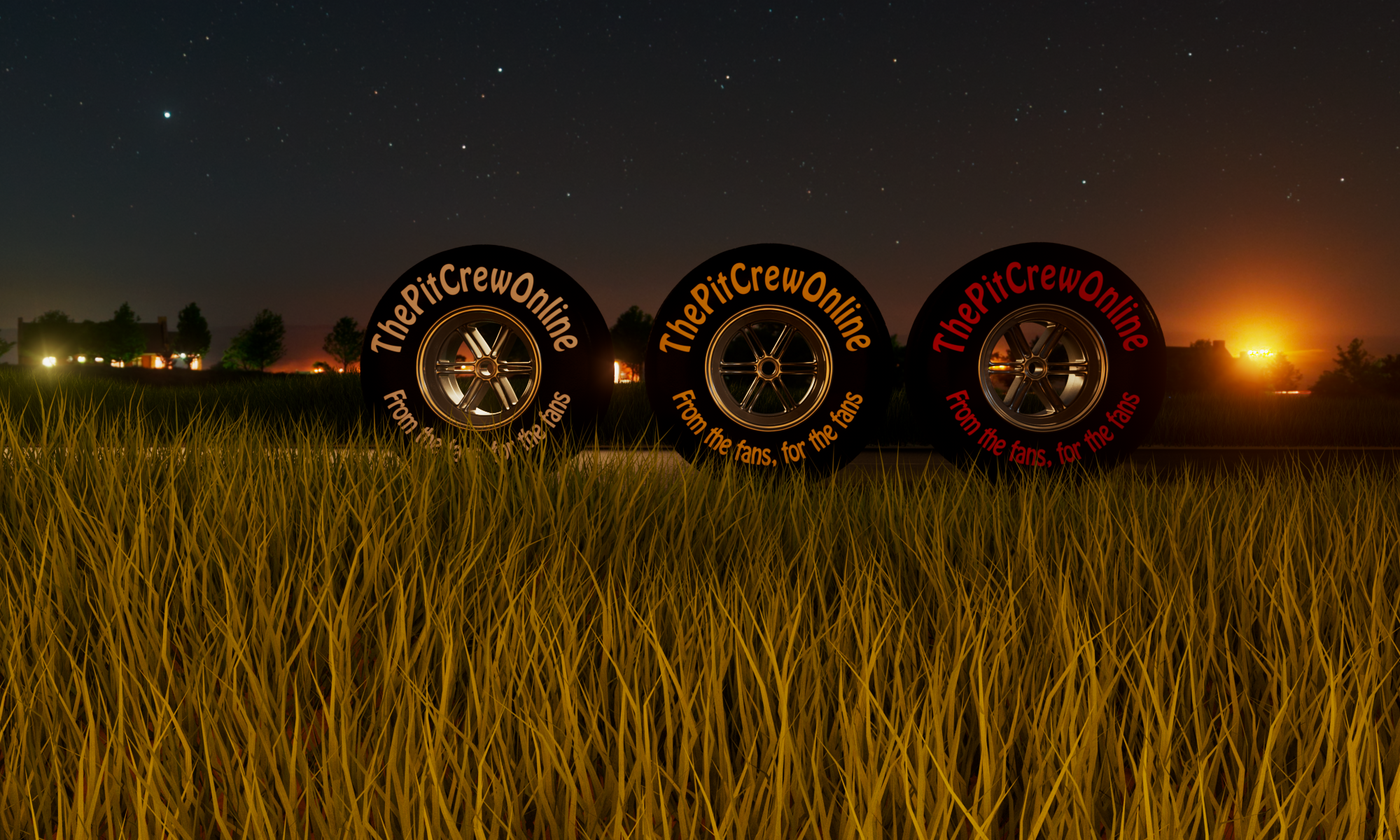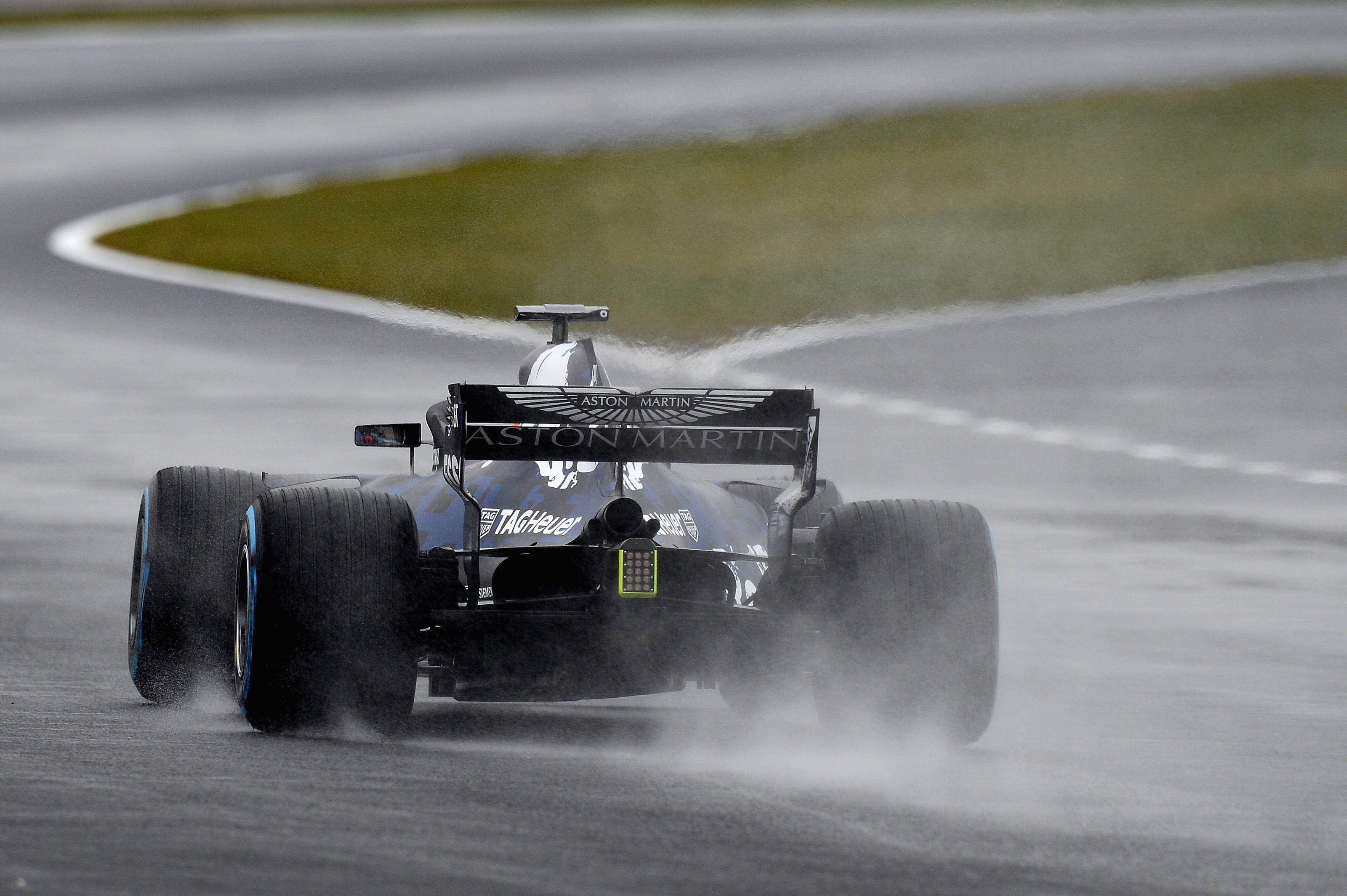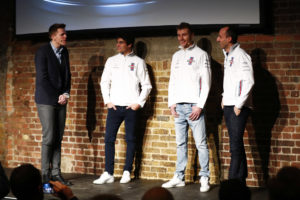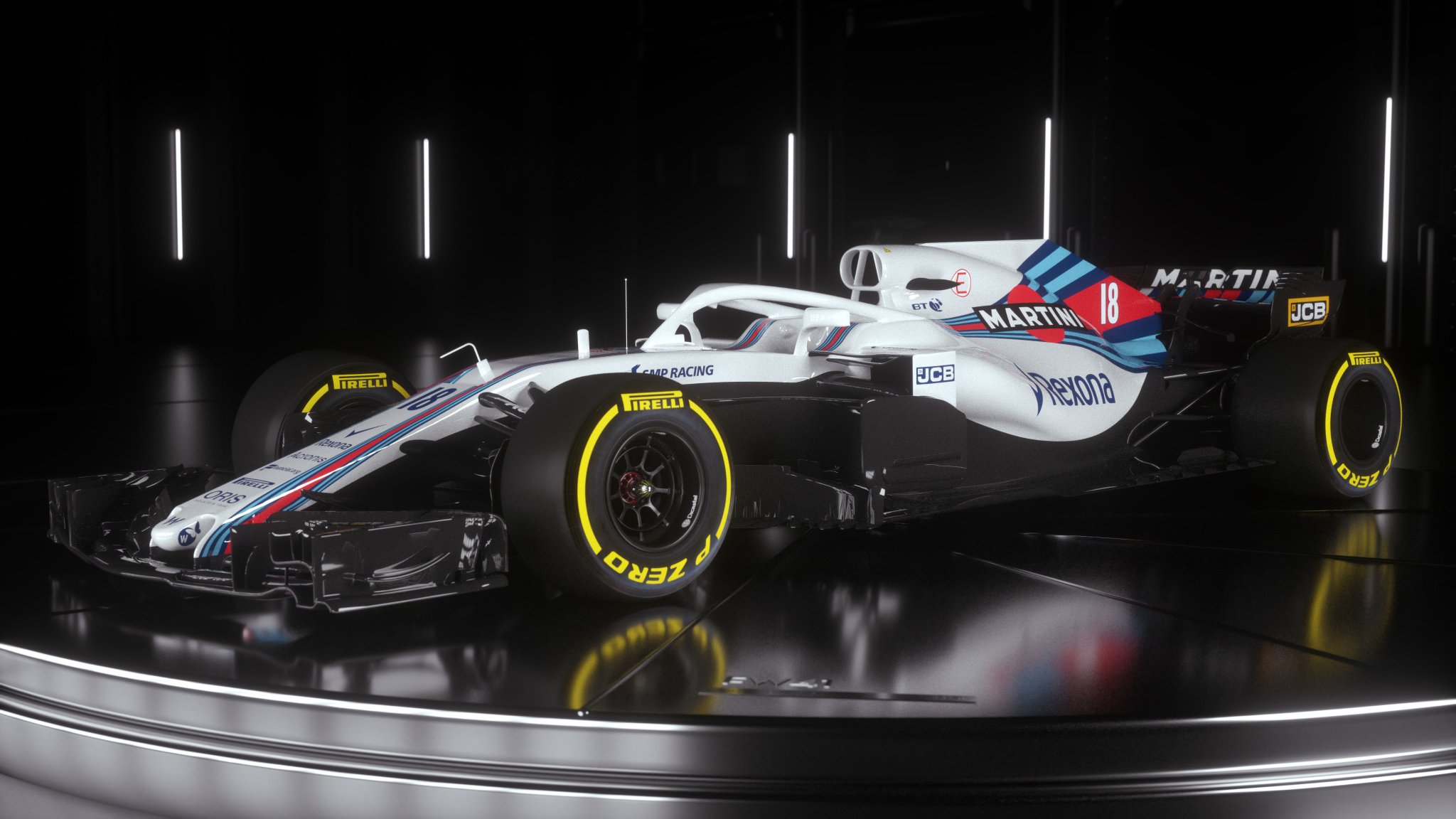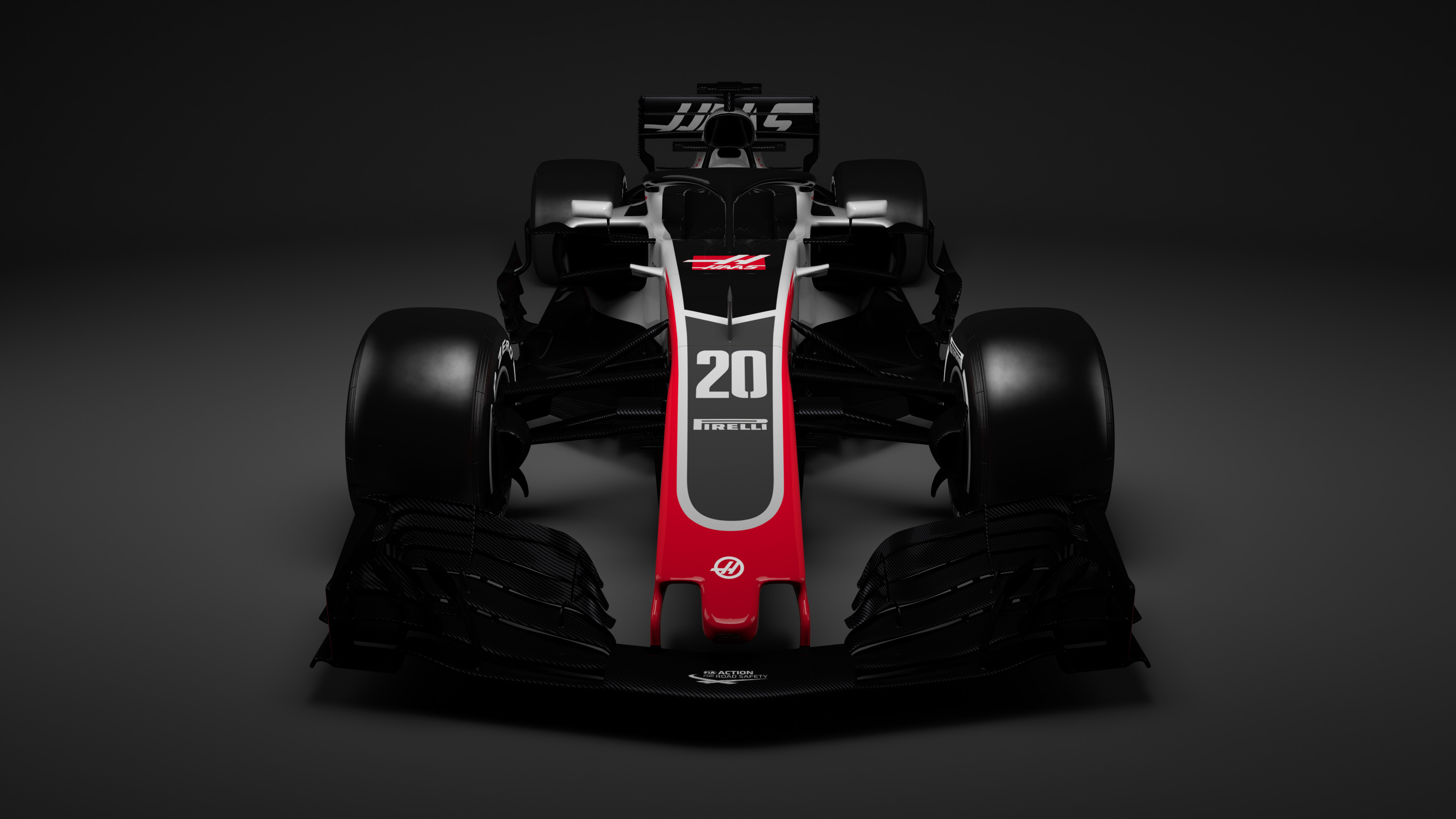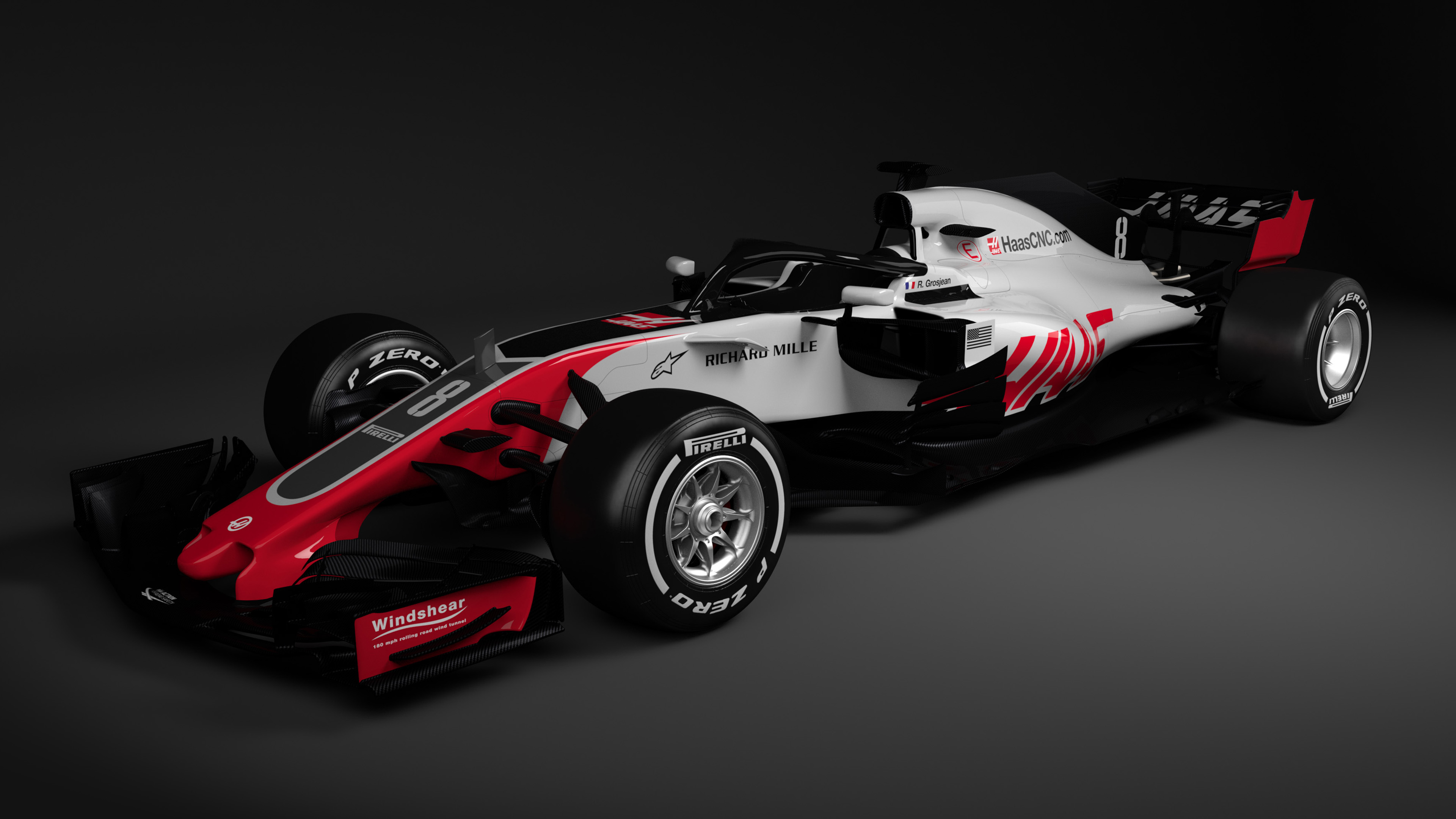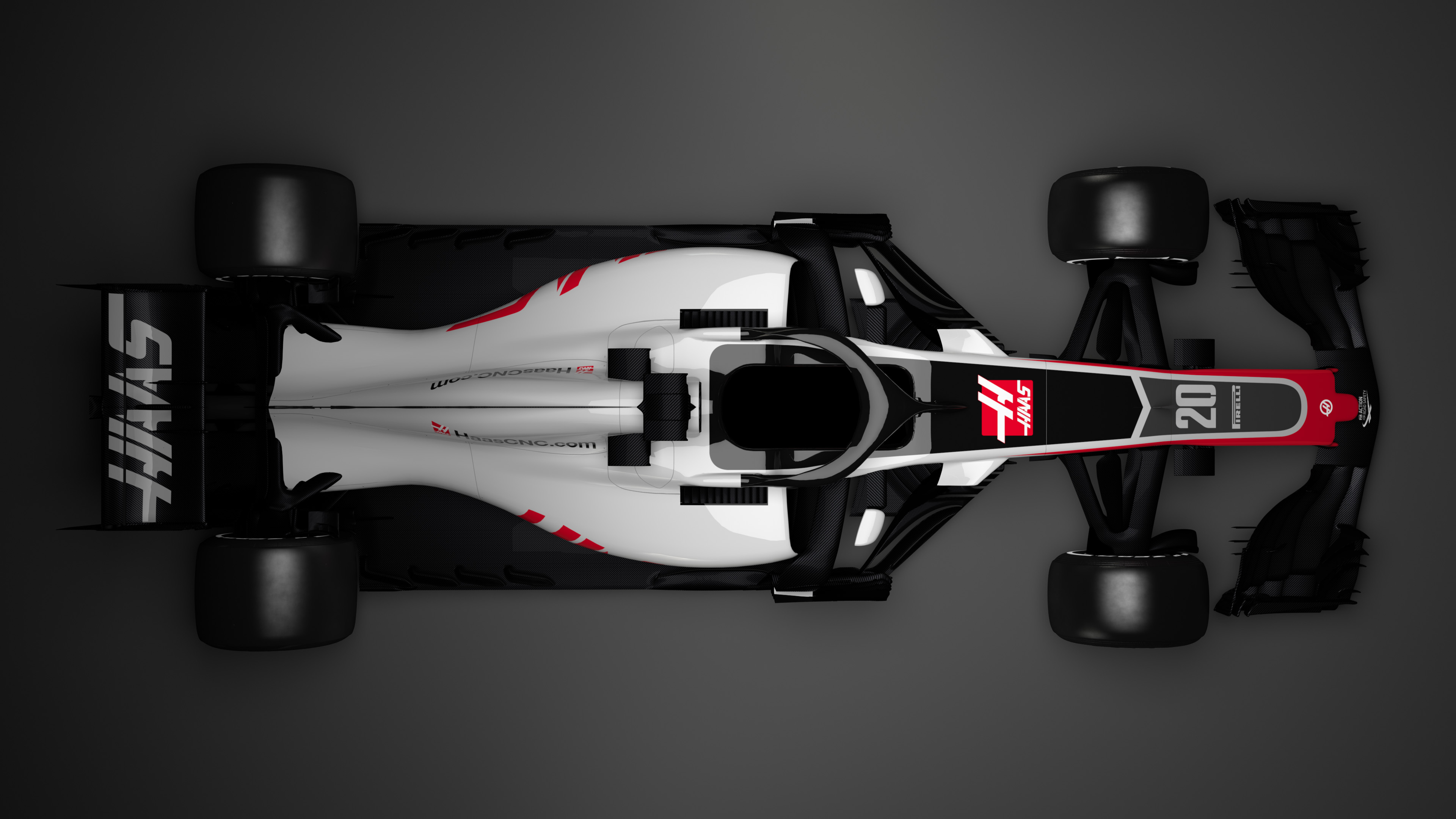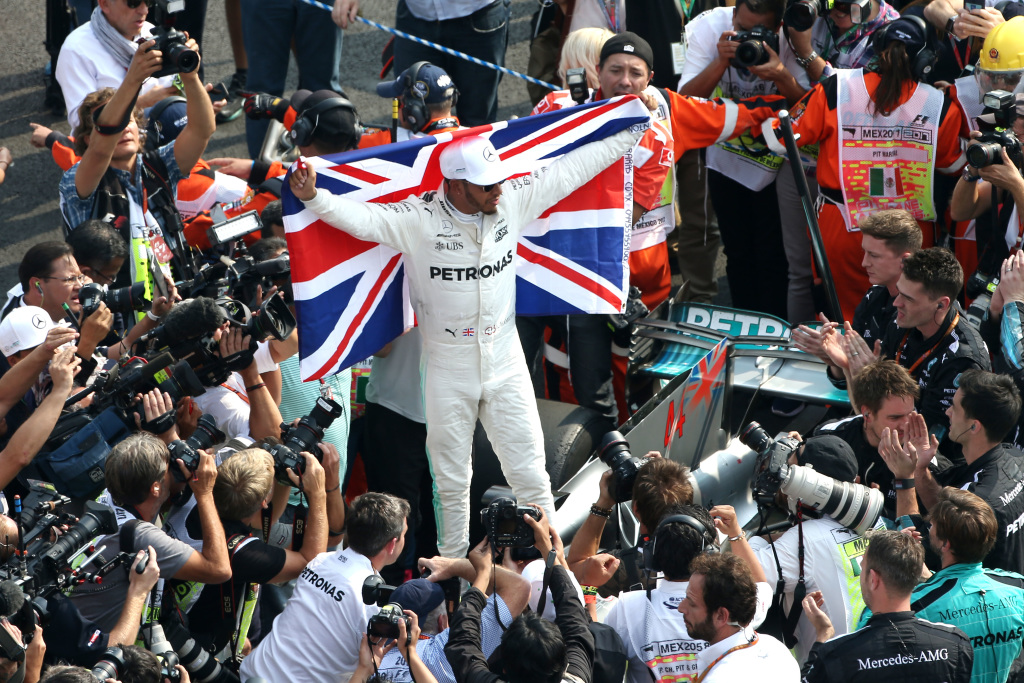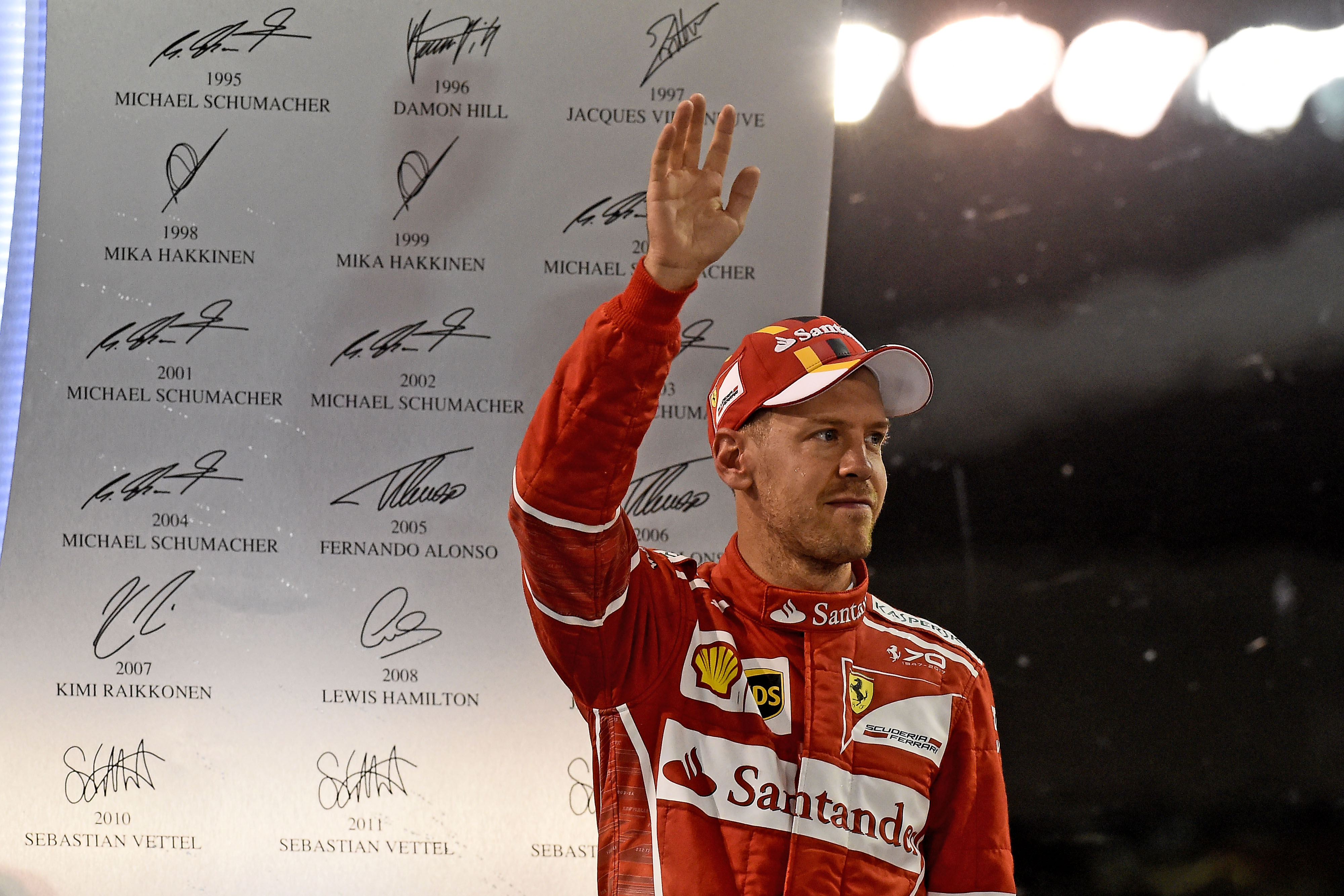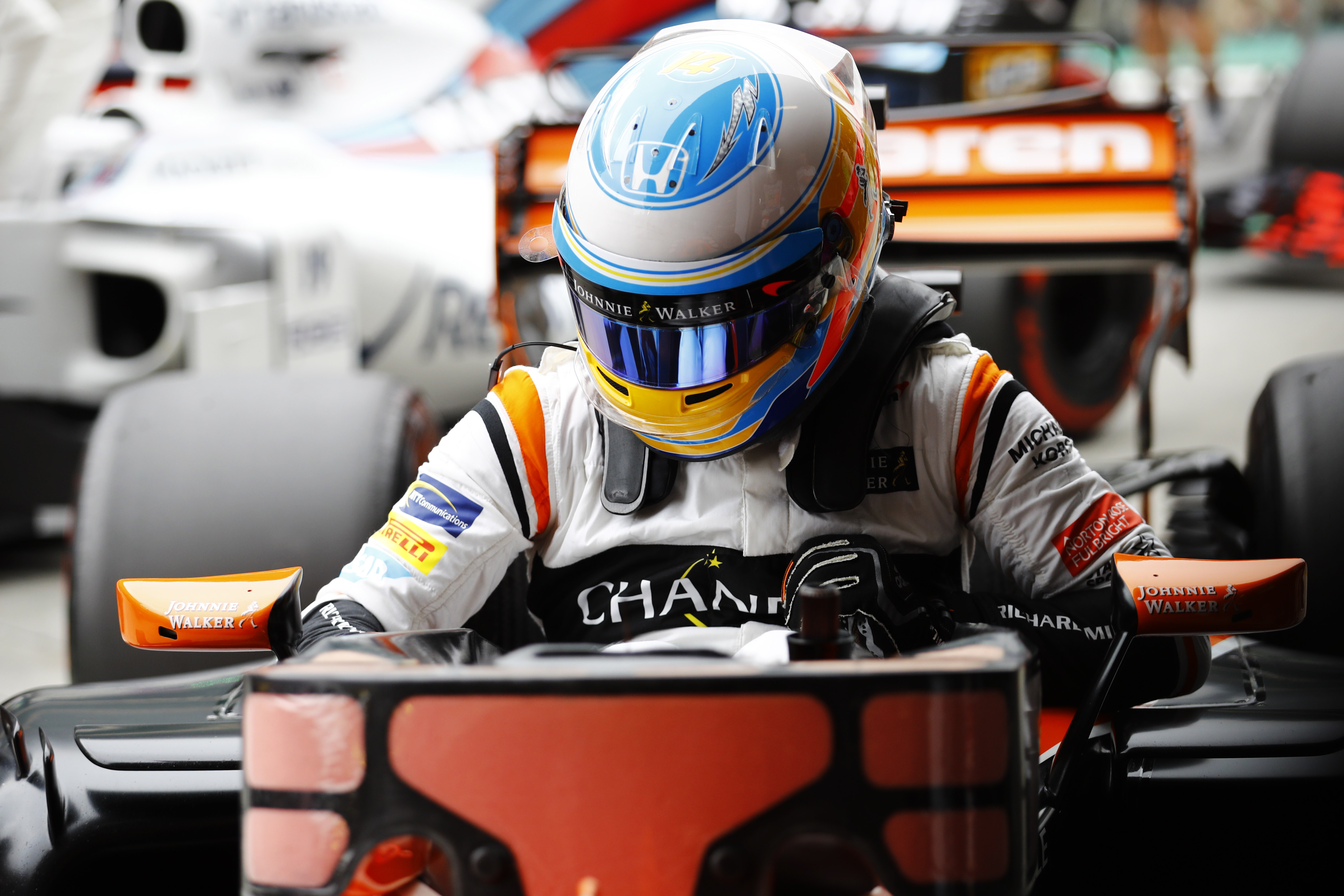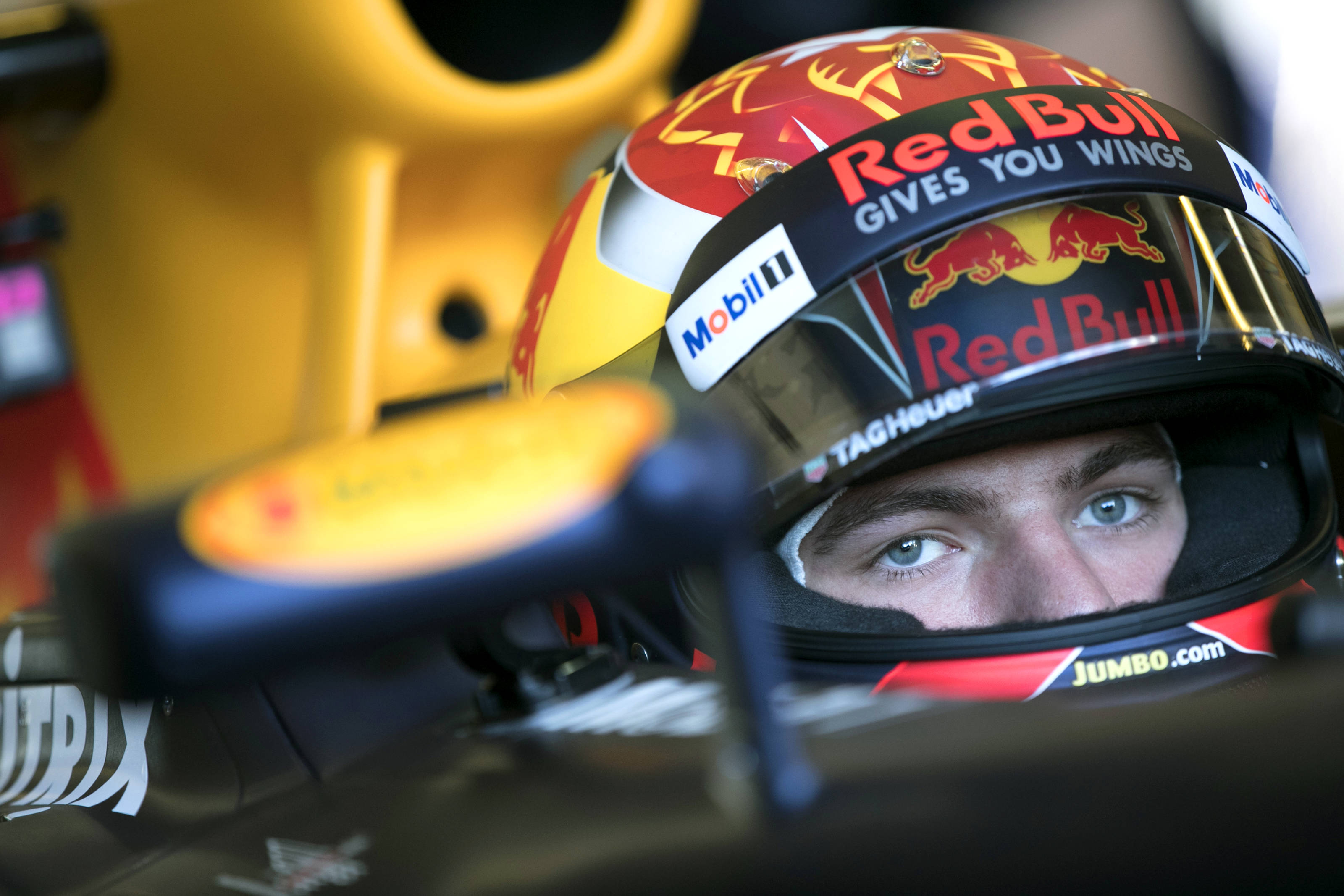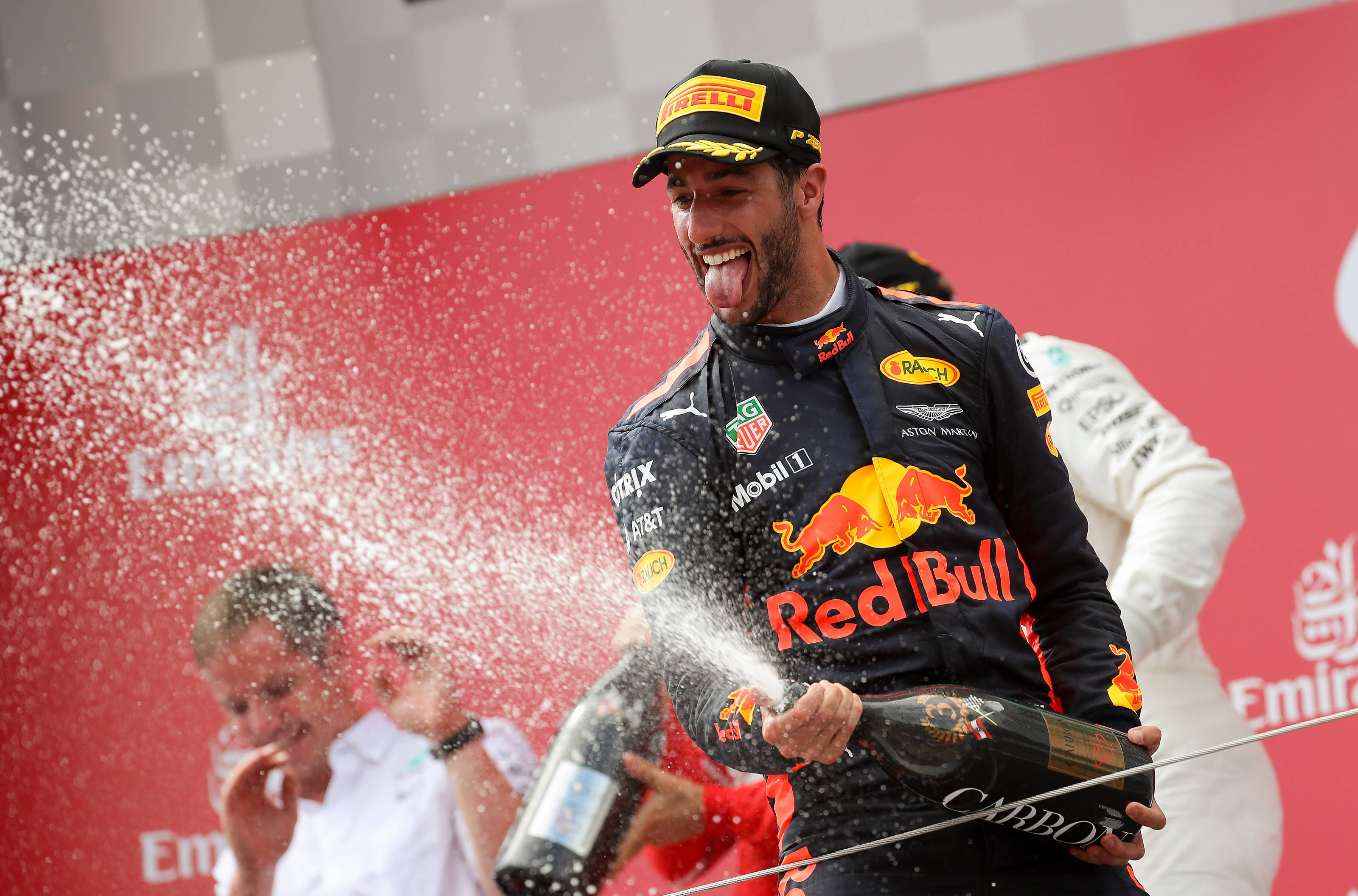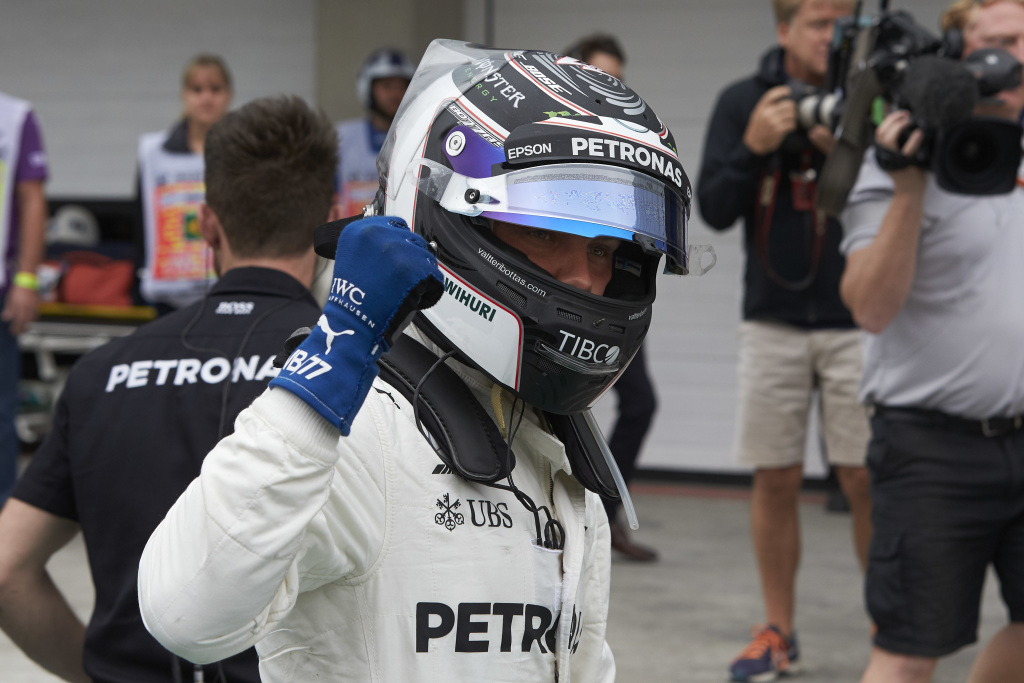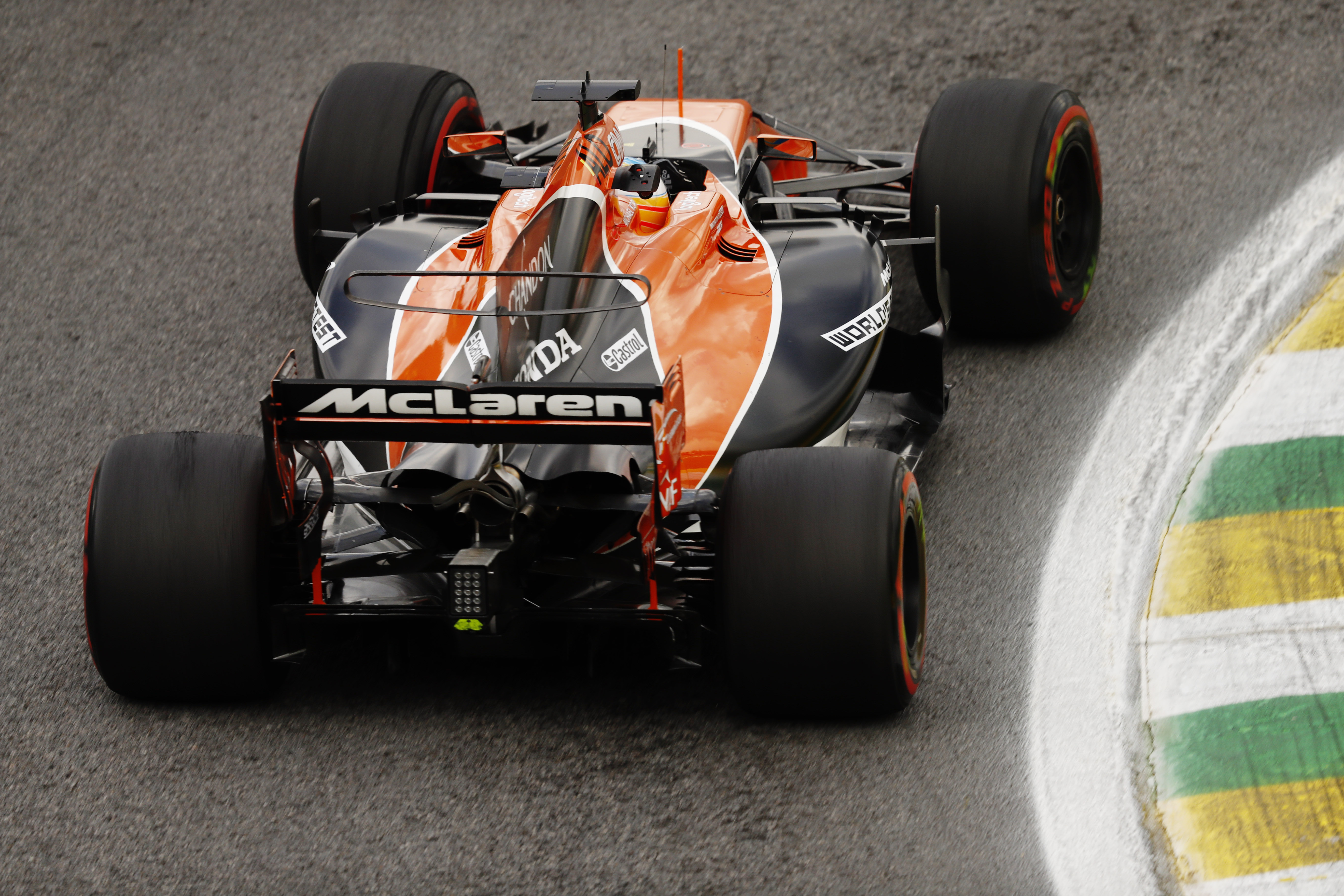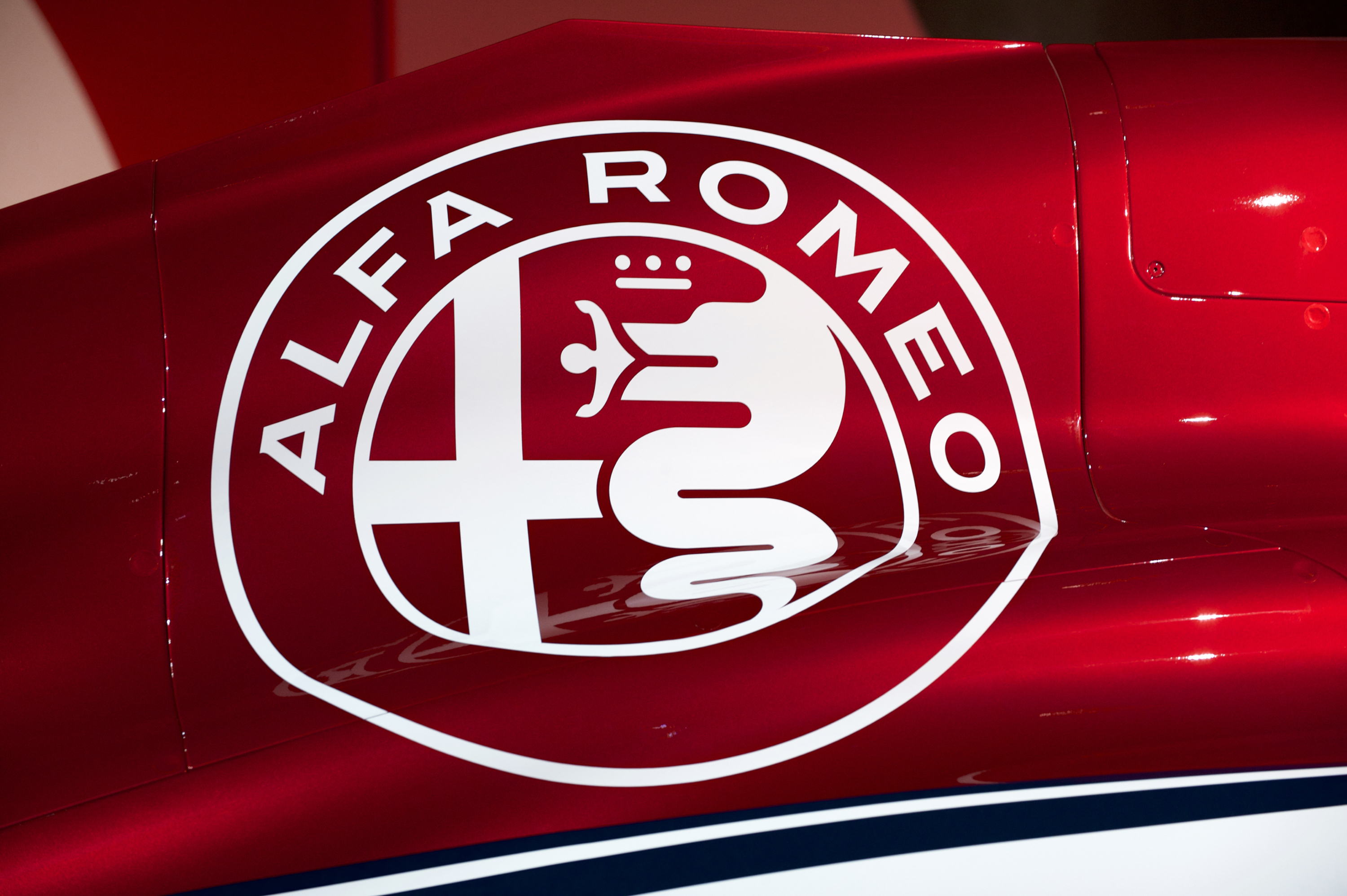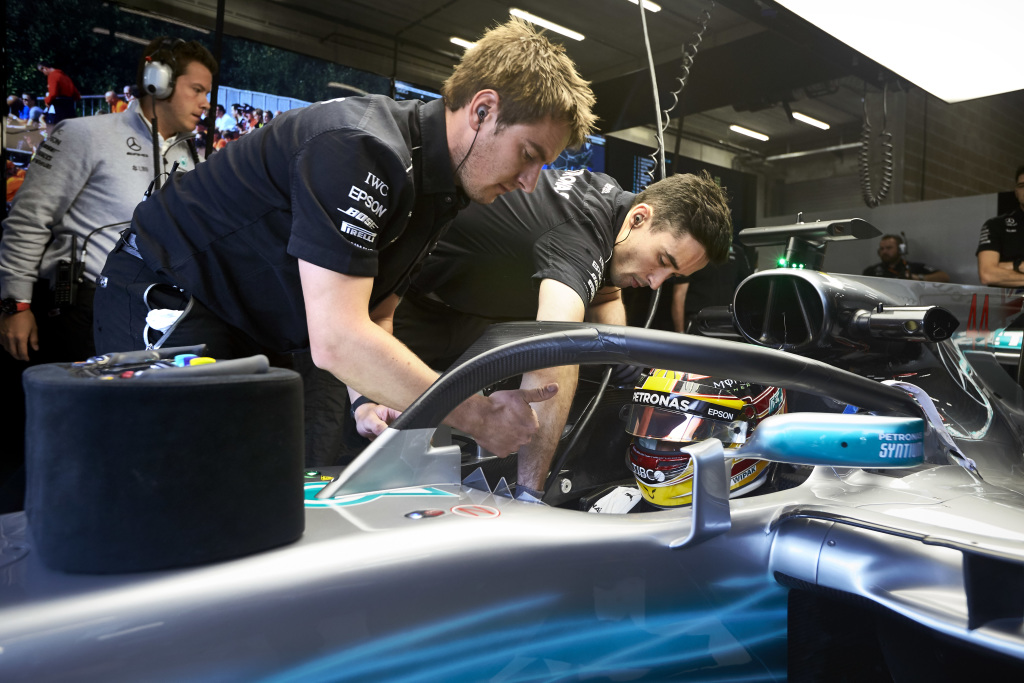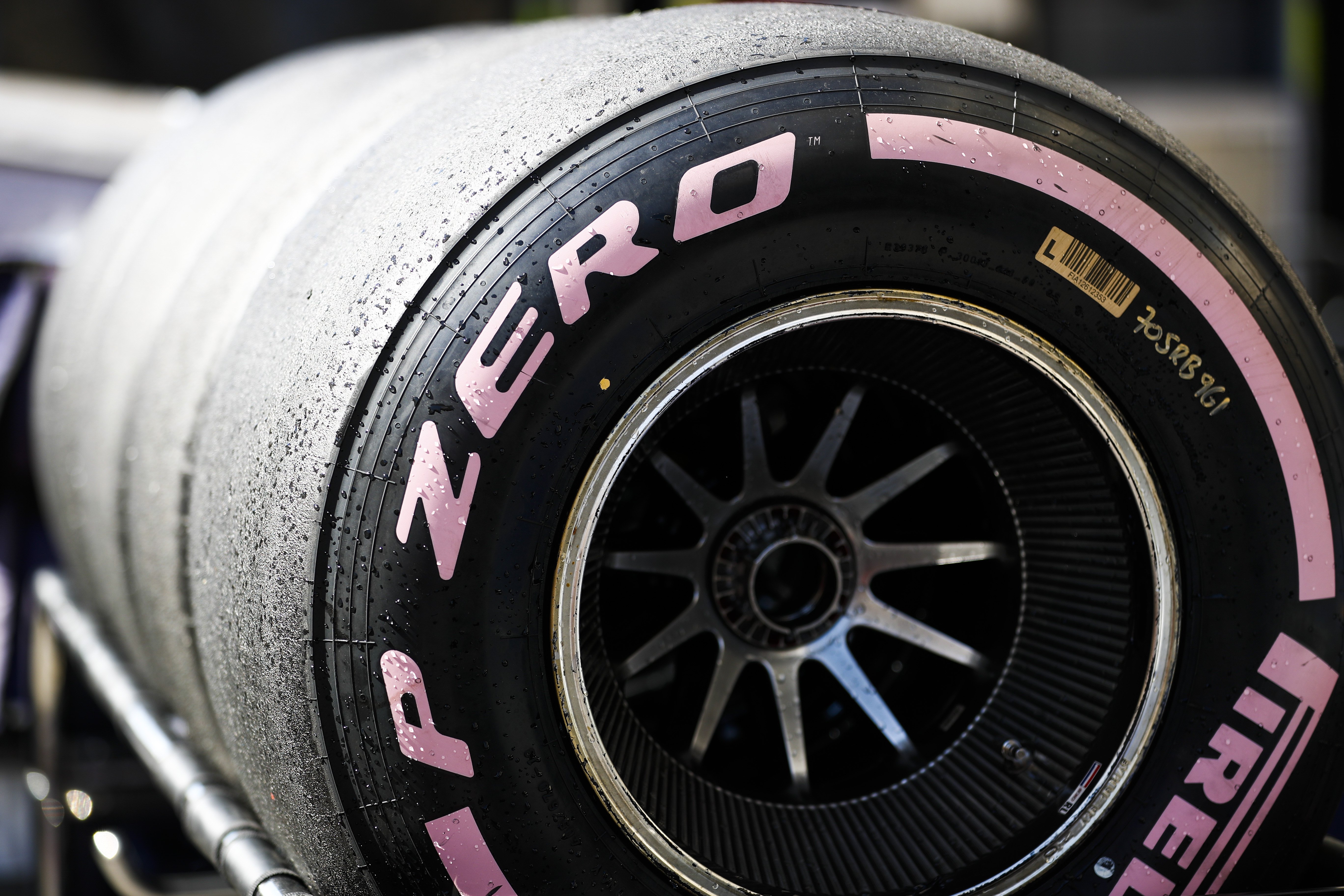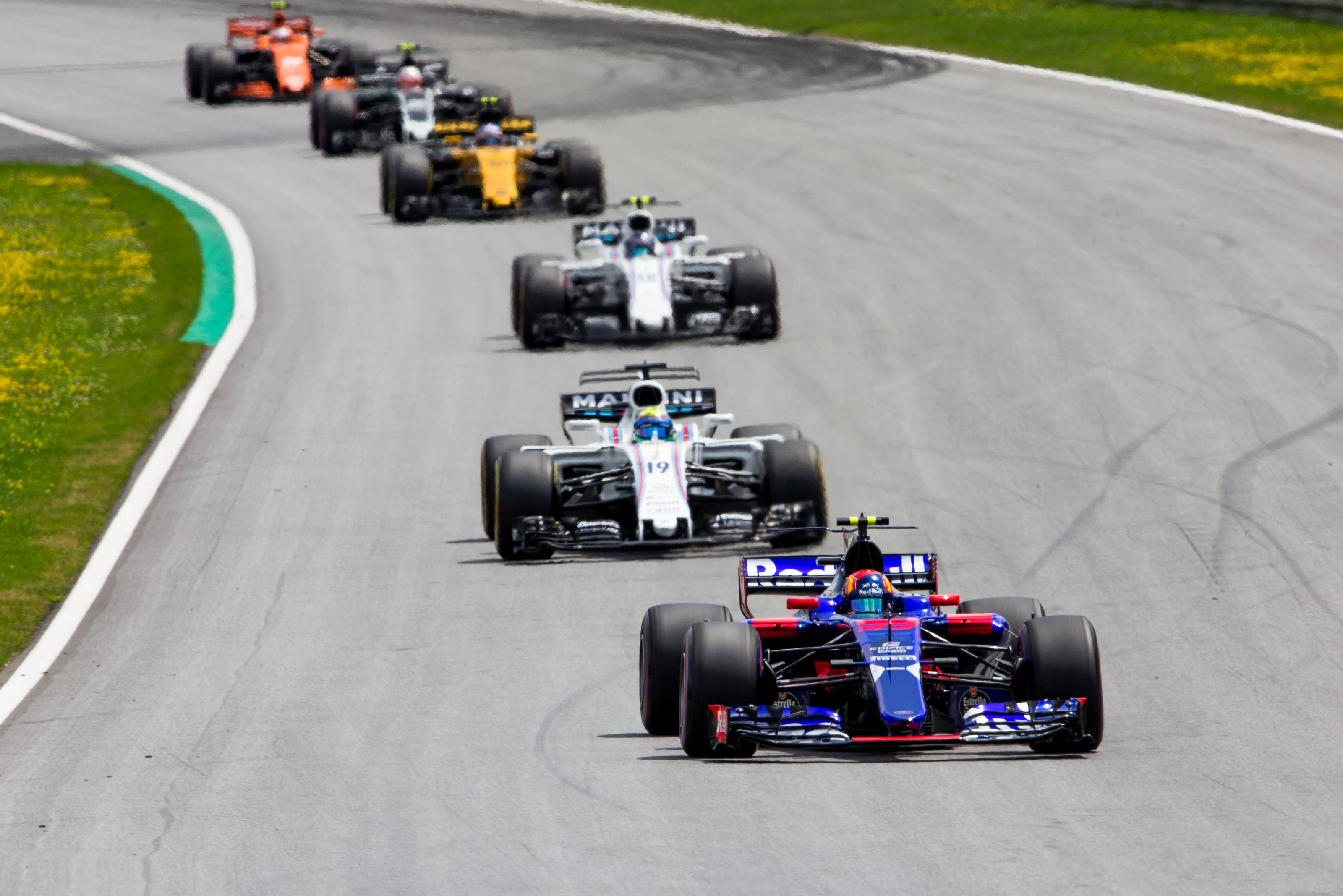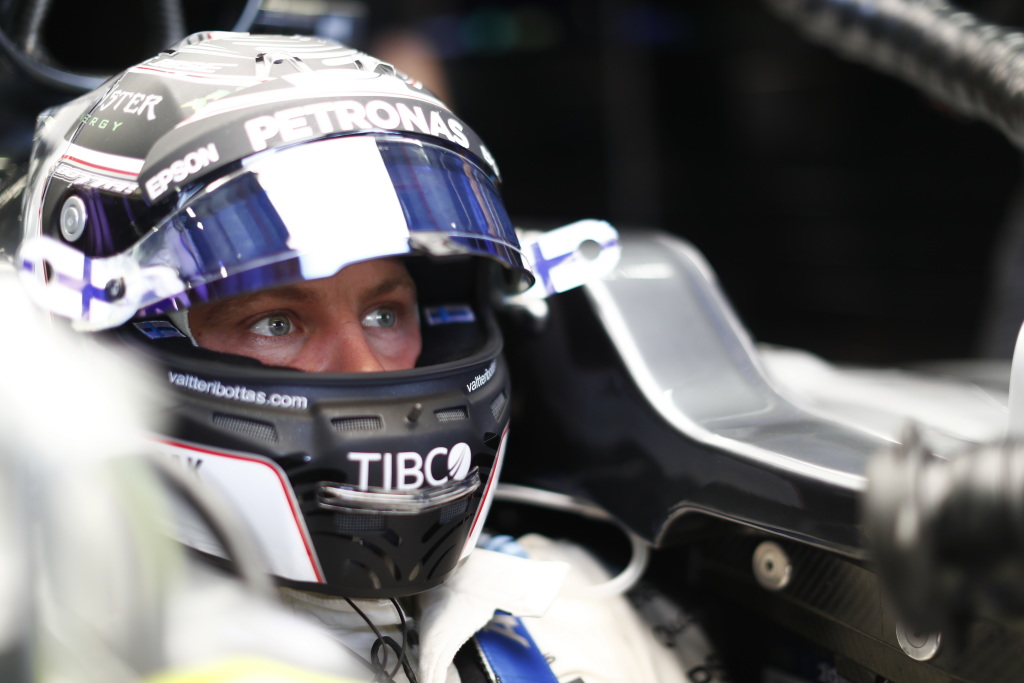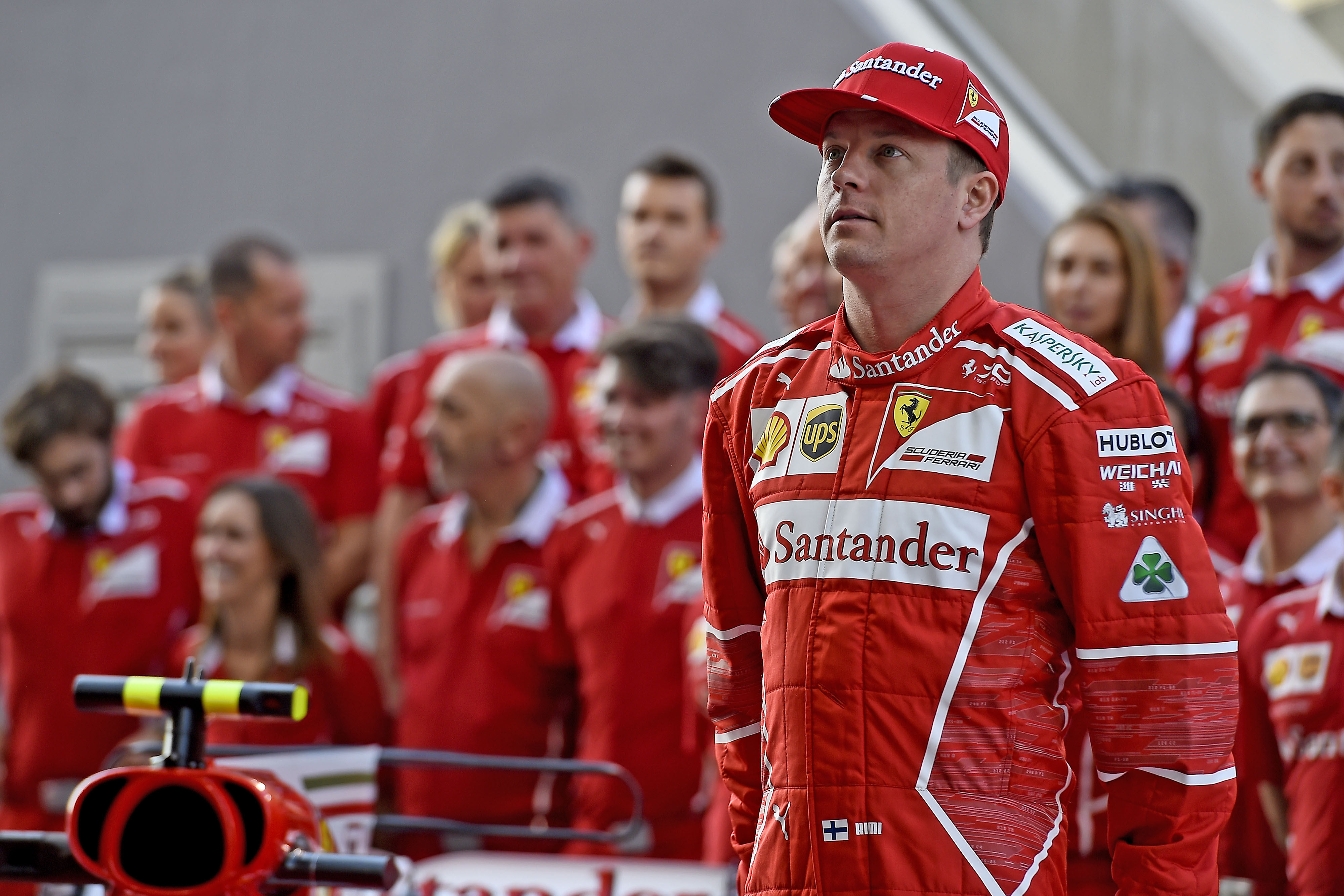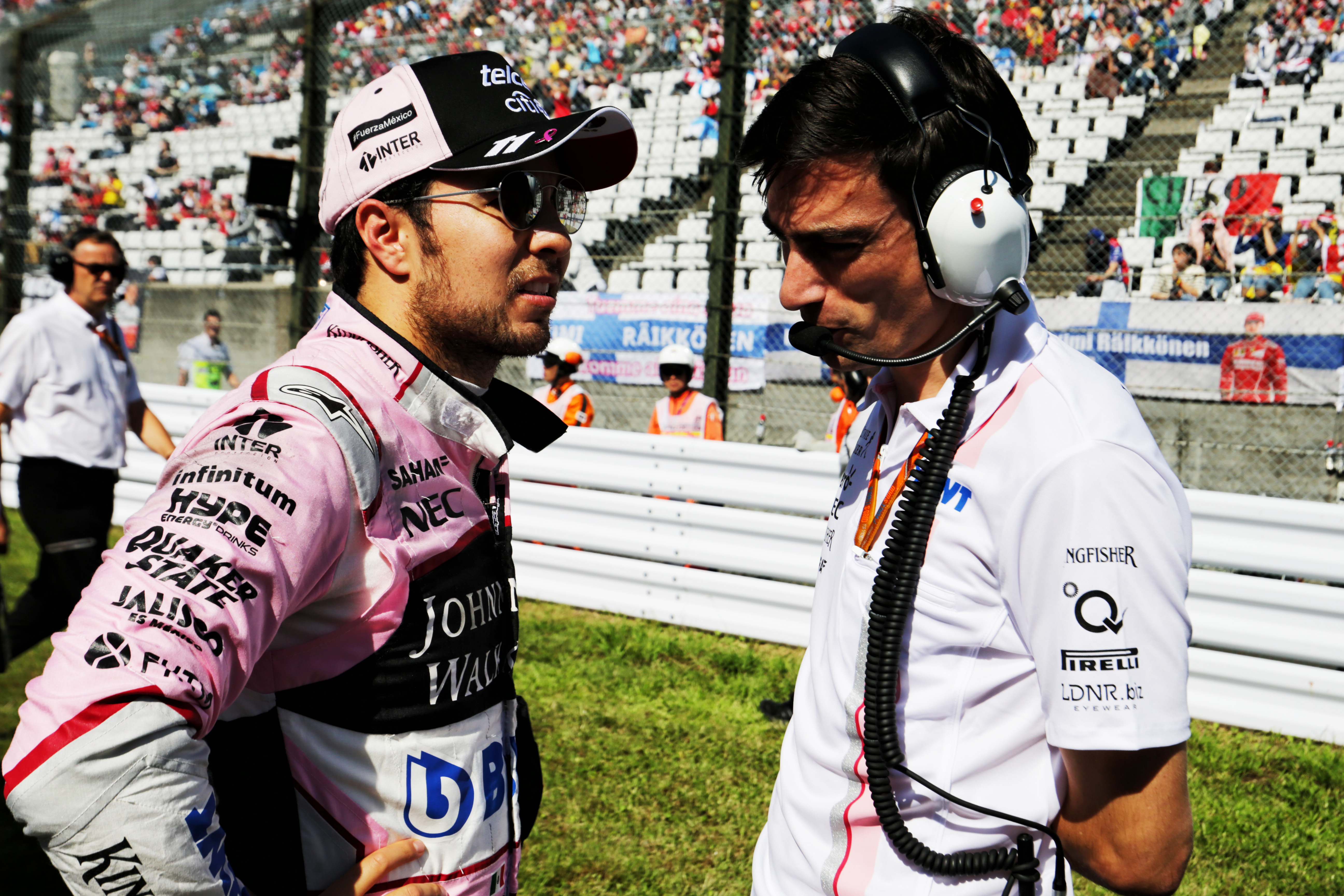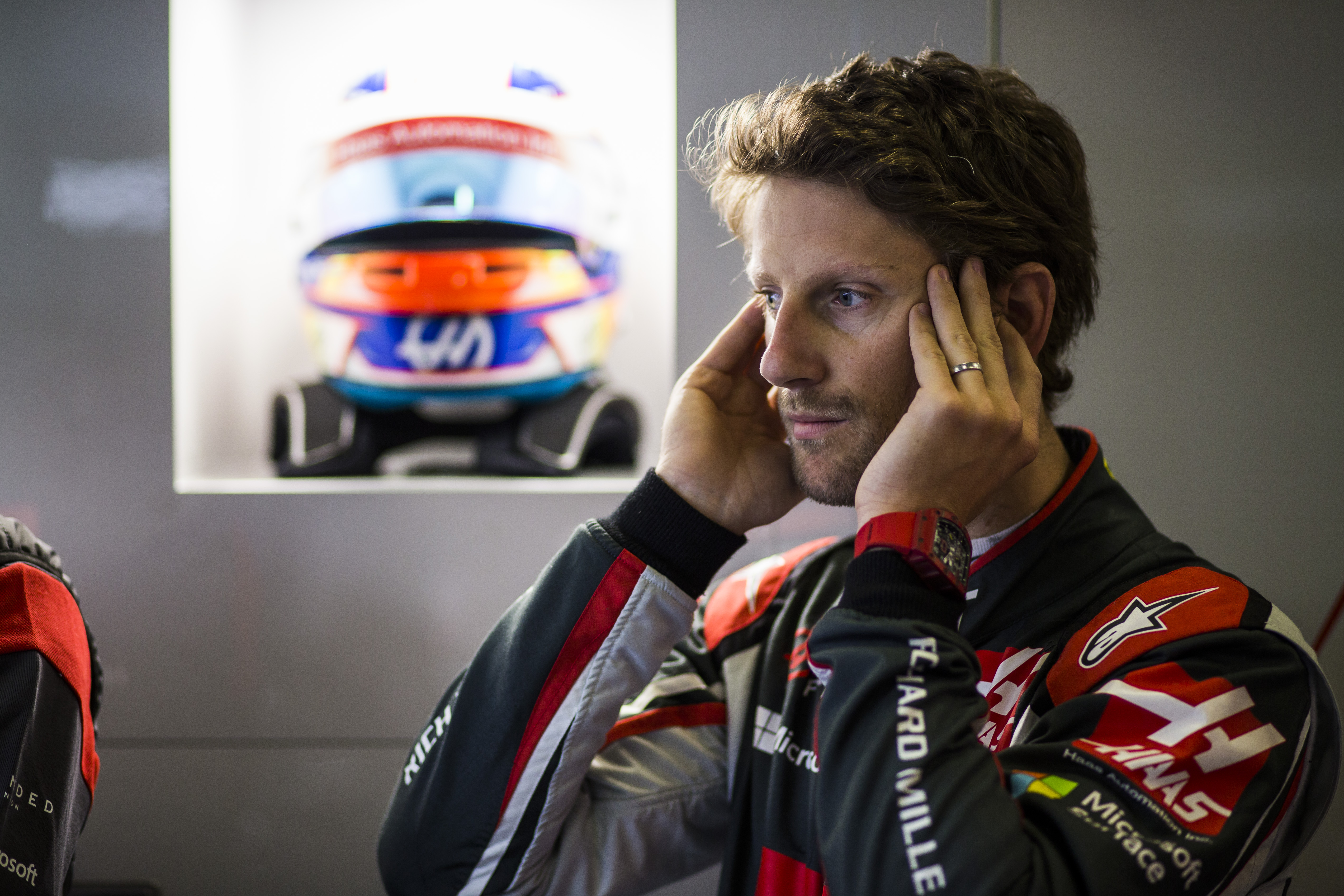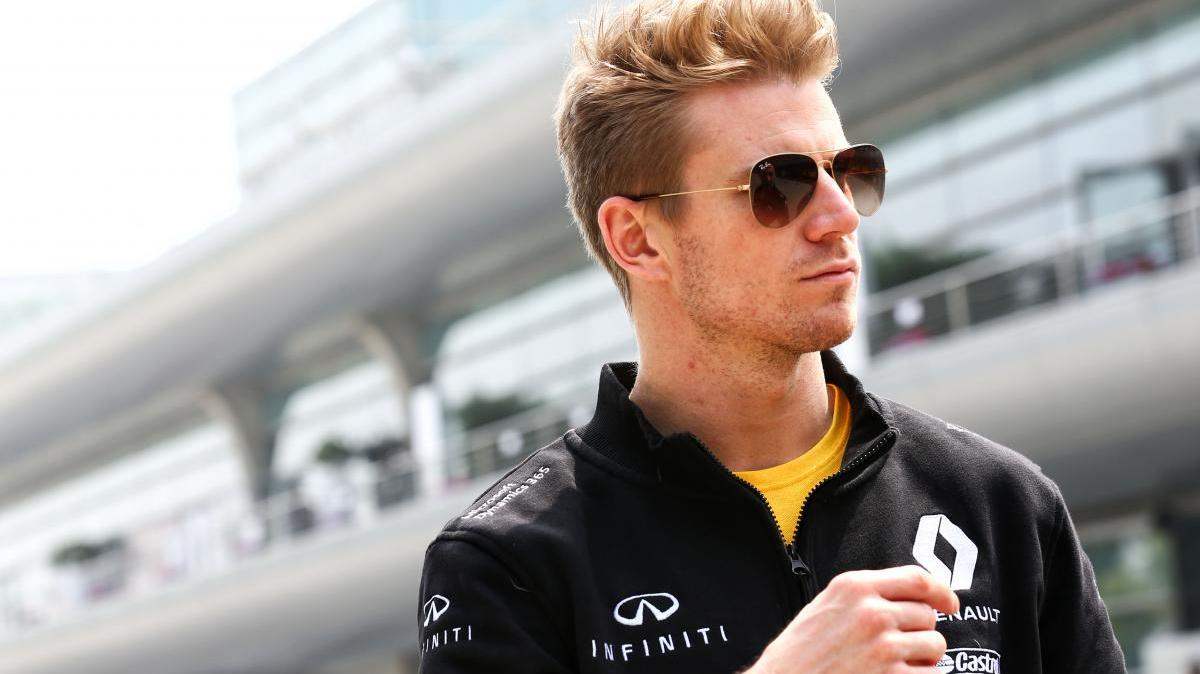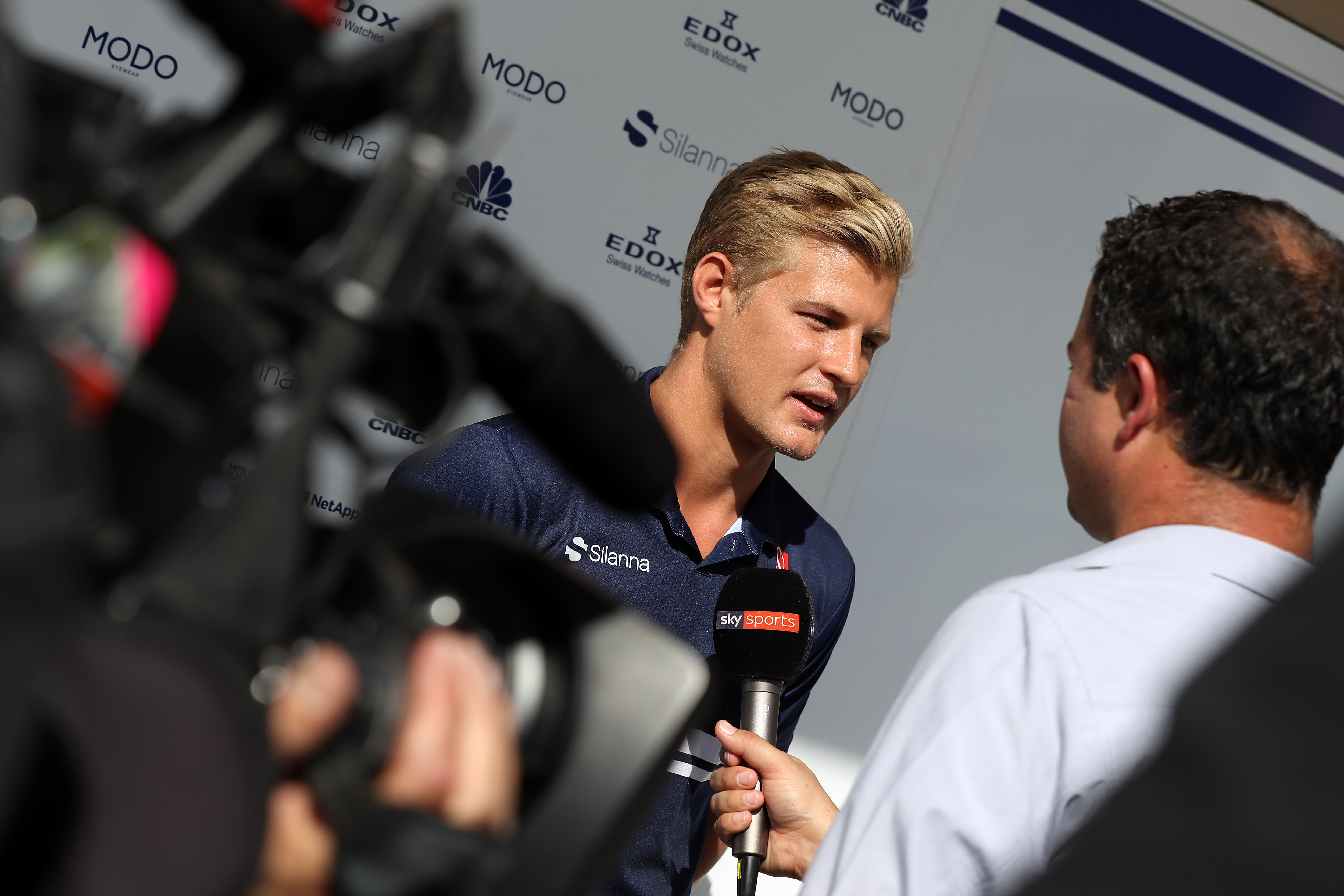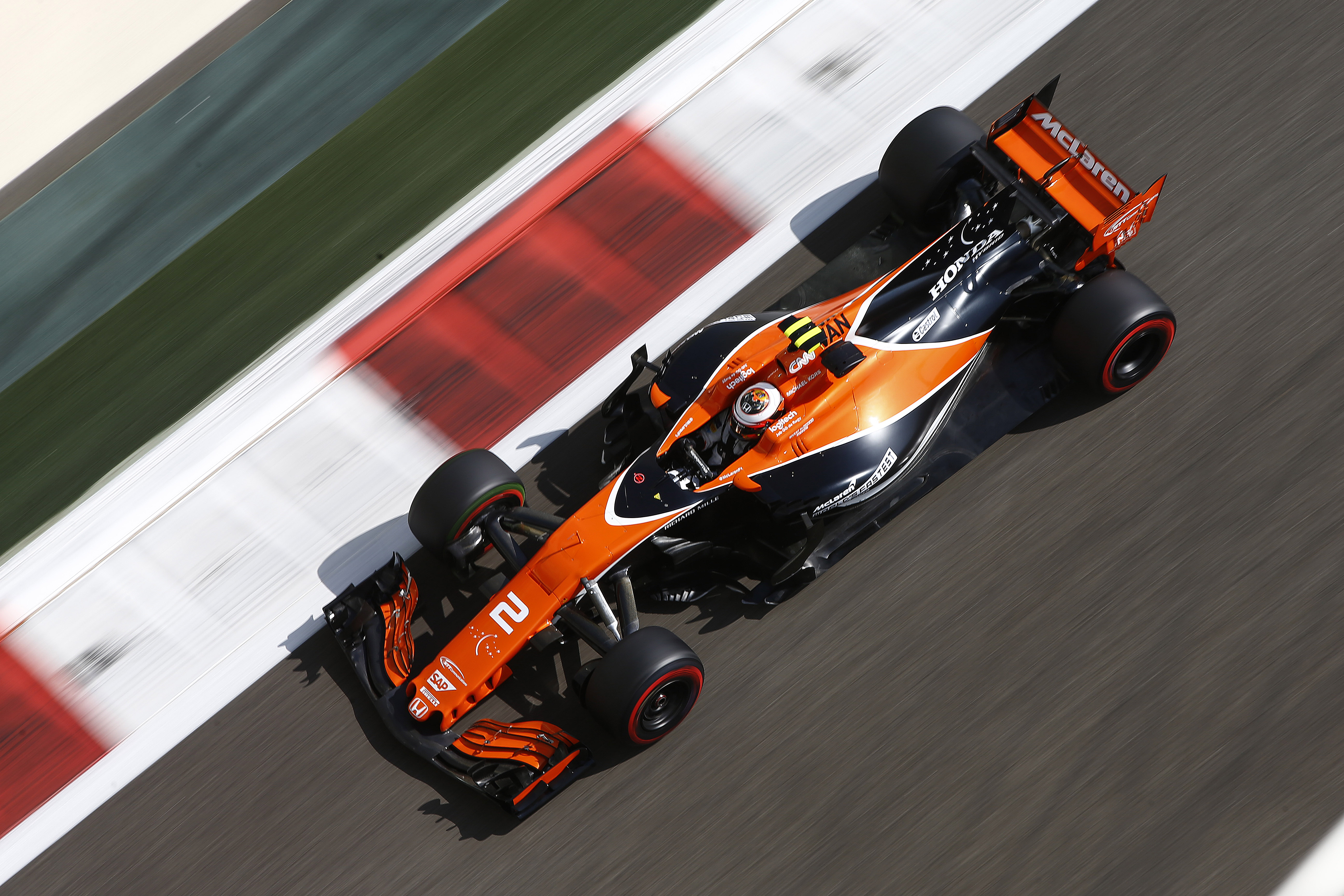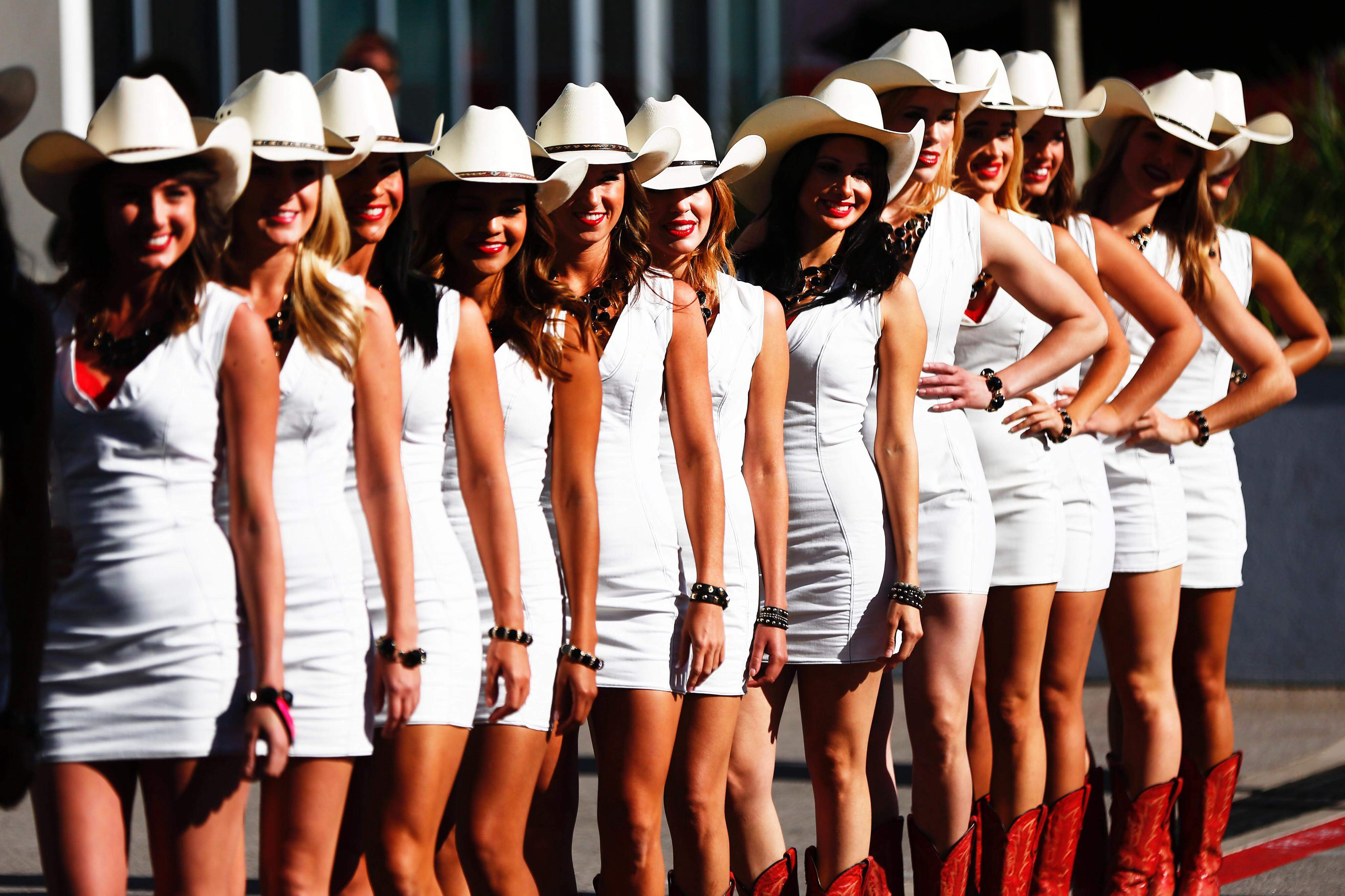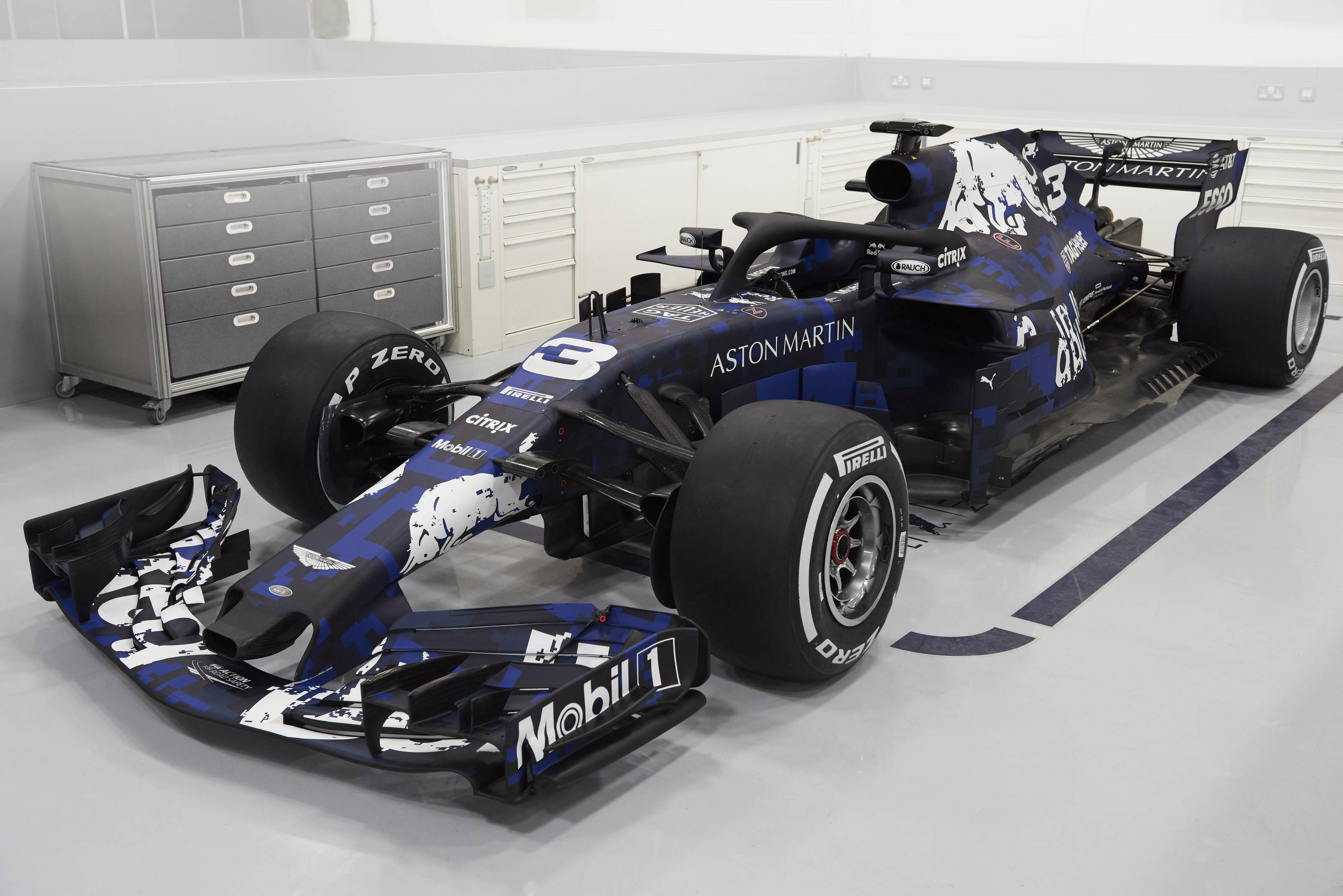
Nach Haas und Williams präsentierte heute Red Bull als erstes Topteam, den neuen Einsatzwagen für die Saison 2018. Da Red Bull für ausgefallene Ideen bekannt ist, war es nicht verwunderlich dass alle Augen heute morgen vor einem ersten Shake Down in Silverstone auf den RB14 gerichtet waren.
Das erste was in das Auge fiel und ein großen Unterschied zum Vorjahreswagen darstellte, war die Lackierung: Ein mattes, futuristisches Design im schwarz/blauen Pixellook. Es ist eine radikale Änderung – doch bevor man zu sehr in Euphorie verfällt, sollte man beachten, dass das nur eine Lackierung für die Testfahrten in Barcelona ist. Der altbekannte Red Bull Stil aus Blau, Gelb und Rot wird wohl bereits nach den Testfahrten zurückkehren.
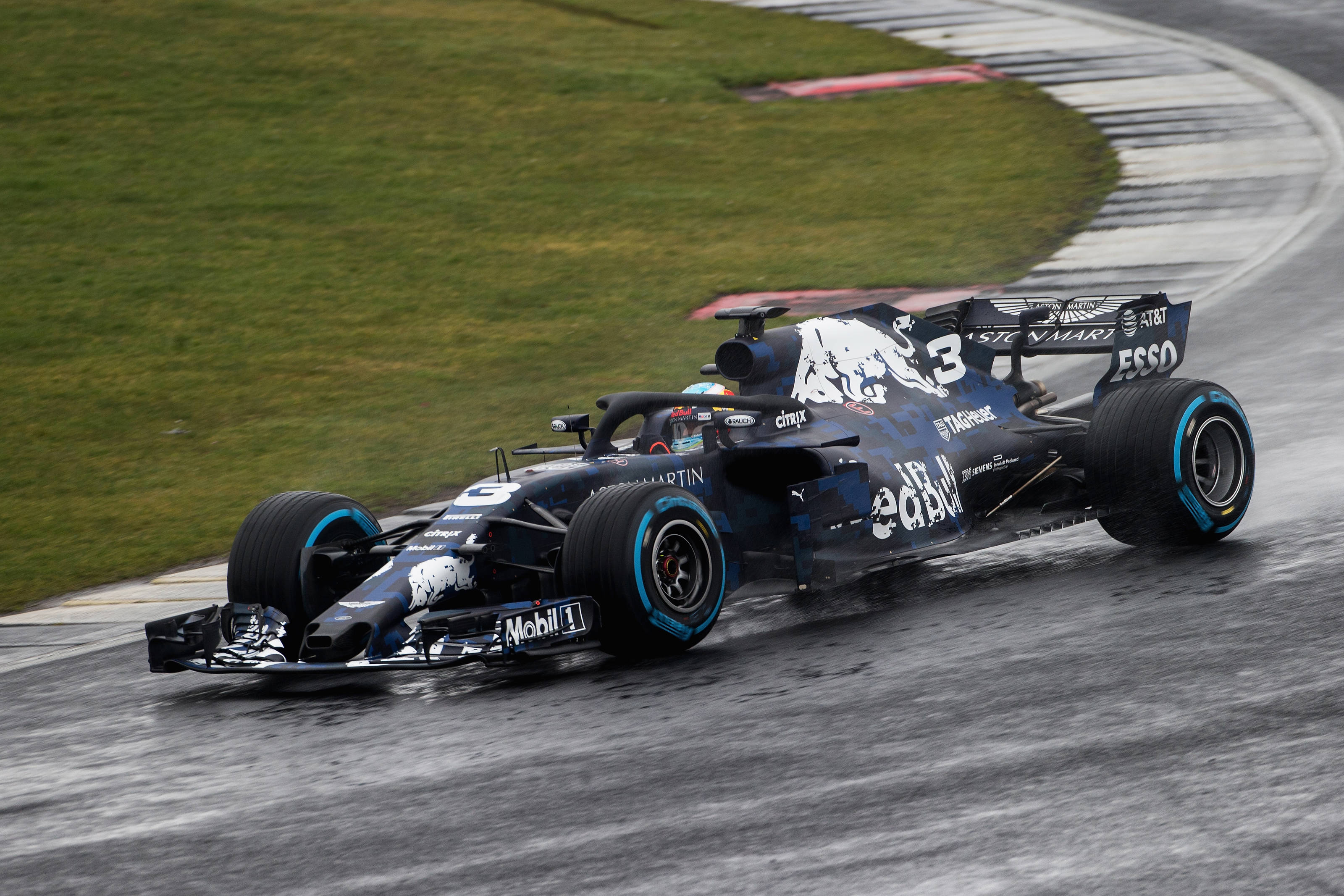
Es ist nicht das erste Mal, dass Red Bull mit einem solch’ ausgefallenen Design bei den Testfahrten auftritt – bereits 2015 sorgte das Team mit dem Cameolook für Aufsehen. Ob es am Ende wirklich was bringt, dass die Details vor der Konkurrenz verhüllt bleiben, wird man abwarten müssen.
Vom Auto selbst, ist die größte Änderung natürlich das Halo, welches gut an die Lackierung angepasst wurde und somit kaum sichtbar ist. Ansonsten wäre da noch die Vorderradaufhängung. Diese wurde an jene von Mercedes und Ferrari angepasst, während das Loch in der Nase vom Vorjahreswagen geblieben ist. Aerodynamisch gesehen hat der RB mit dem Auto welches im Vorjahr präsentiert wurde, wenig zutun. Die Handschrift von Adrian Newey ist wieder erkennbar. Wirkte der Vorjahreswagen für Red Bull Verhältnisse fast schon nackt, sind nun wieder deutlich mehr Flügel zusehen. Damals startete Red Bull holprig.
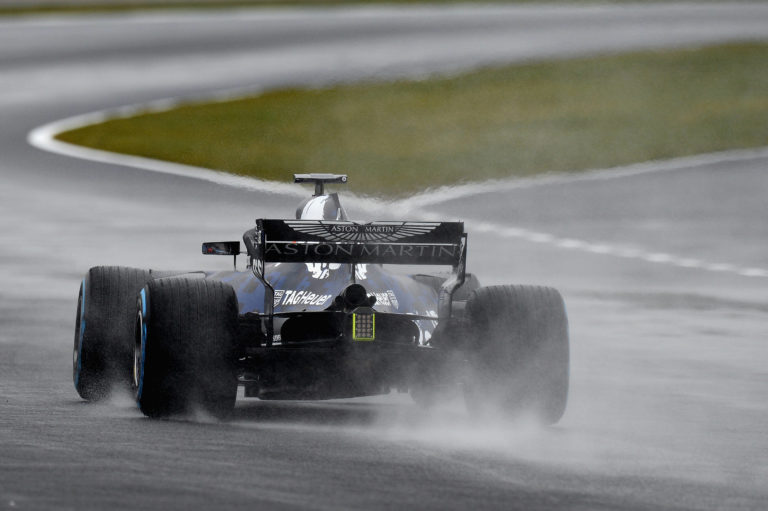
2017 stellte sich bekanntlich als Enttäuschung heraus. Sollte eine Aerodynamische Regelrevolution den Bullen eigentlich in die Karten spielen, verpasste man am Saisonstart den Anschluss. Erst mit einem großen Aerodynamikupdate zum Spanien GP, schaffte es die Truppe aus Milton Keynes die Lücke zu Ferrari und Mercedes zu schließen. Doch dort war es bereits zu spät.
Ein weiterer Hauptgrund für die Performance 2017 war die schlechte Zuverlässigkeit – etwas wo sowohl Red Bull als auch McLaren von Renault für 2018 Besserung erwarten. Umso höher ist die Erwartung 2018, zumindest intern. Nach außen stapelt man nach dem Lehrjahr 2017 nun tief – Helmut Marko lies bei “Auto, Motor und Sport” verlauten, dass er nicht glaube dass RB 2018 bereits um die WM fahren wird. Ob das auch in Wirklichkeit so ist, darf bezweifelt werden.
Doch in einem hat er Recht: Auf Fahrerseite ist das Team bereits WM tauglich aufgestellt. Daniel Ricciardo wird erneut an der Seite von Max Verstappen fahren. Der Vetrag des Australiers läuft am Ende der Saison aus, während Red Bull erst vergangenes Jahr den Holländer bis 2020 an sich bund. Der Vorteil dieser Fahrerpaarung ist zweifelsfrei der, dass beide vollkommene Alphatiere sind, während die Konkurrenz von Mercedes und Ferrari neben ihren Starfahrern mit Bottas und Räikkonen jeweils eine Art Nummer 2-Fahrer beschäftigen.
Interessant wird in dieser Saison auch die Motorenfrage: Renault gab laut Medienberichten bereits im Herbst 2017 der Chefetage von RB bekannt, dass man sie nicht 2019 beliefern werde – Mit dieser Frage in Hinterkopf haben die Bullen bis zum Sommer diesen Jahres Zeit, sich einen neuen Partner zu beschaffen – umso mehr hofft man auf einen Aufschwung von Honda mit Toro Rosso.
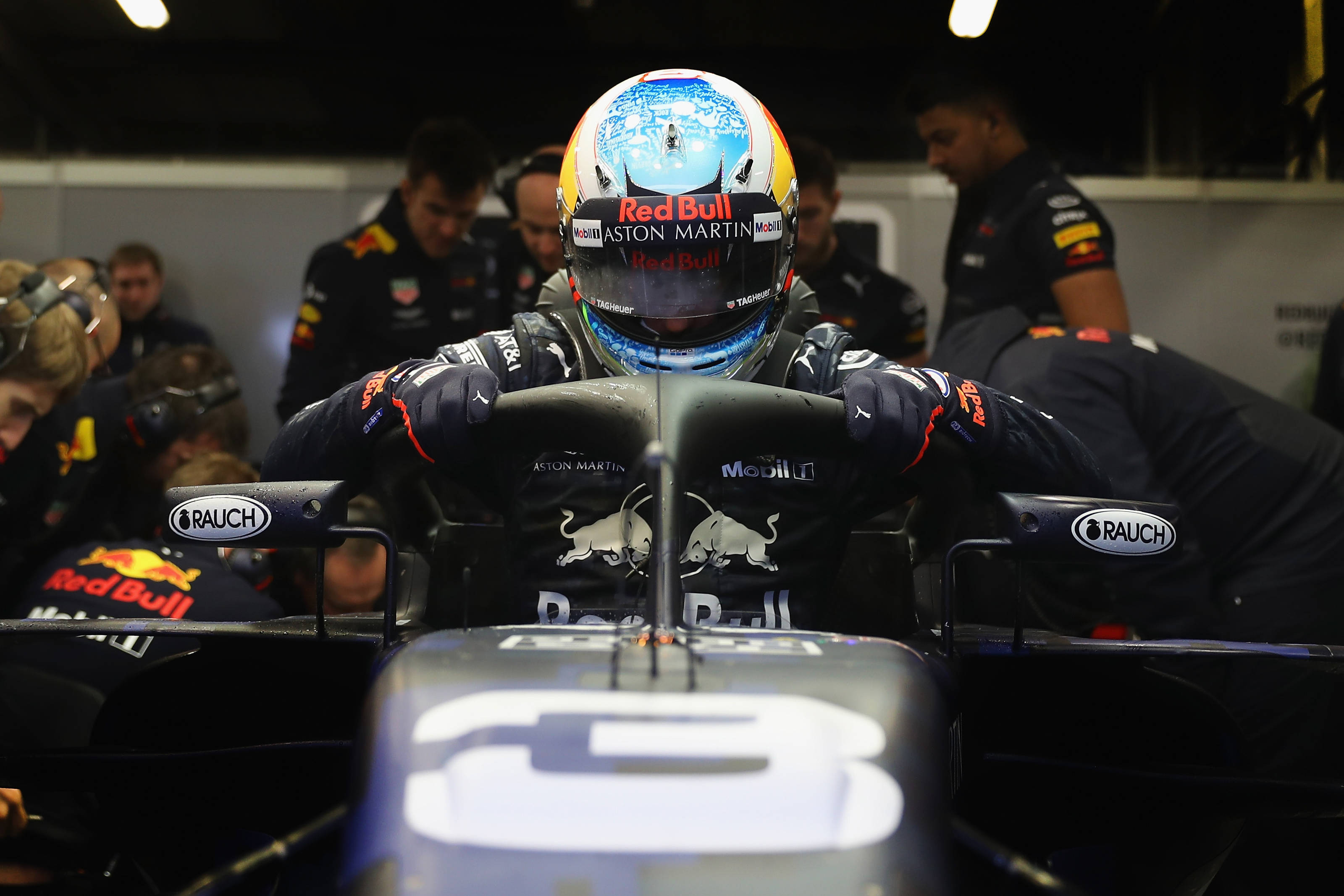
All diese Faktoren dürften eine Rolle spielen, wie das Jahr für RB laufen wird. Wenn sie gegen Mercedes und Ferrari kämpfen, werden beide Fahrer glücklich sein.
Wird Red Bull es mit einer deutlich besseren und organisierteren Vorbereitung als im Vorjahr schaffen, von Anfang an an der Spitze mitzumischen, oder werden sie ein weiteres Jahr nur das Heck von Ferrari und Mercedes bewundern können? Die Zeit wird es zeigen.
